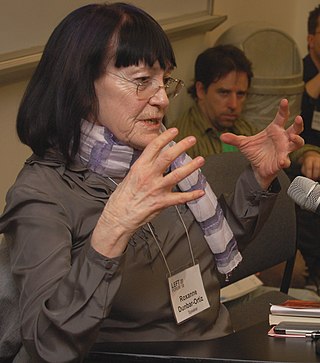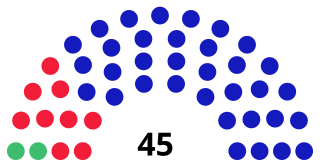
Nicaragua, officially the Republic of Nicaragua, is the largest country in Central America, bordered by Honduras to the north, the Caribbean to the east, Costa Rica to the south, and the Pacific Ocean to the west. Managua is the country's capital and largest city. As of 2015, it was estimated to be the third largest city in Central America. Nicaragua's multiethnic population of six million includes people of mestizo, Indigenous, European and African heritage. The main language is Spanish. Indigenous tribes on the Mosquito Coast speak their own languages and English.

The Mosquito Coast is the area along the eastern coast of present-day Nicaragua and Honduras. It was named after the local Miskito Nation and was long dominated by British interests and known as the Mosquito Kingdom. From 1860 suzerainty of the area was transferred to Nicaragua with the name Mosquito Reserve, and in November 1894 the Mosquito Coast was militarily incorporated into Nicaragua. However, in 1960, the northern part was granted to Honduras by the International Court of Justice.

The Miskitos are a native people in Central America. Their territory extends from Cape Camarón, Honduras, to Río Grande de Matagalpa, Nicaragua, along the Mosquito Coast, in the Western Caribbean Zone. Their population is estimated at 700,000 people as of 2021, according to the official Miskito Database.

The North Caribbean Coast Autonomous Region is one of two autonomous regions in Nicaragua. It was created by the Autonomy Statute of 7 September 1987. It covers an area of 33,106 km2 and has a population of 541,189. It is the largest autonomous region or department in Nicaragua. The capital is Puerto Cabezas. It contains part of the region known as the Mosquito Coast.

Roxanne Dunbar-Ortiz is an American historian, writer, and activist, known for her 2014 book An Indigenous Peoples' History of the United States.
Awas Tingni is an indigenous Mayagna community of some 2,400 members on the Miskito Coast of Nicaragua, in the municipality of Waspam in the North Caribbean Coast Autonomous Region. Awas Tingni is located near the junction of the Rio Wawa and the river Awas Tingni in a densely forested area. In Mayagna, Awas Tingni means "Pine River" and denotes both the town and the river by which it is situated. Awas Tingni was named due to the large pine forest in the area, similar to the pine barrens of the mid-Atlantic United States.

The Fourth World Conference on Women: Action for Equality, Development and Peace was the name given for a conference convened by the United Nations during 4–15 September 1995 in Beijing, China.

The Mayangna are a people who live on the eastern coasts of Nicaragua and Honduras, an area commonly known as the Mosquito Coast. Their preferred autonym is Mayangna, as the name "Sumo" is a derogatory name historically used by the Miskito people. Their culture is closer to that of the indigenous peoples of Costa Rica, Panama, and Colombia than to the Mesoamerican cultures to the north. The Mayangna inhabited much of the Mosquito Coast in the 16th century. Since then, they have become more marginalized following the emergence of the Miskito as a regional power.

The United Nations Permanent Forum on Indigenous Issues is the UN's central coordinating body for matters relating to the concerns and rights of the world's indigenous peoples. There are more than 370 million indigenous people in some 70 countries worldwide.
The Bosawás Biosphere Reserve is a tropical rainforest in Nicaragua designated as a UNESCO biosphere reserve in 1997. At approximately 20,000 km² in size, the reserve comprises about 15% of the nation's total land area. It is the second largest rainforest in the Western Hemisphere, after the Amazon Rainforest in Brazil. Bosawás is largely unexplored, and is extremely rich in biodiversity.

The Rama are an indigenous people living on the eastern coast of Nicaragua. Since the start of European colonization, the Rama population has declined as a result of disease, conflict, and loss of territory. In recent years, however, the Rama population has increased to around 2,000 individuals. A majority of the population lives on the island of Rama Cay, which is located in the Bluefields Lagoon. Additional small Rama communities are dispersed on the mainland from Bluefields to Greytown. The Rama are one of three main indigenous groups on Nicaragua’s Caribbean coast.
Indigenous people under the nation-state have experienced exclusion and dispossession. With the rise in globalization, material advantages for indigenous populations have diminished. At times, national governments have negotiated natural resources without taking into account whether or not these resources exist on indigenous lands. In this sense for many indigenous populations, the effects of globalization mirror the effects of the conquest in the mid 16th century.

Afro-Nicaraguans are Nicaraguans of Sub-Saharan African descent. Five main distinct ethnic groups exist: The Creoles who descend from Anglo-Caribbean countries and many of whom still speak Nicaragua English Creole, the Miskito Sambus descendants of Spanish slaves and indigenous Central Americans who still speak Miskito and/or Miskito Coast Creole, the Garifunas descendents of Zambos expelled from St. Vincent who speak Garifuna, the Rama Cay zambos a subset of the Miskito who speak Rama Cay Creole, and the descendants of those enslaved by the Spanish.
Settlement of English people along the Caribbean Coast, or Miskito Coast, of Nicaragua began in 1633. The area was controlled by Britain until 1860, and eventually integrated into Nicaragua by 1894. The Miskito Coast region divided into two autonomous regions within Nicaragua after 1987.

The South Caribbean Coast Autonomous Regional Council is the devolved legislature of the South Caribbean Coast Autonomous Region. It has the power to legislate on a wide variety of economic, social, and cultural issues not reserved to the central government. The council has the same power as the North Caribbean Coast Autonomous Regional Council.
The Latin American and Caribbean Feminist Encuentros are a series conferences which began in 1981 to develop transnational networks within the region of Latin America and the Caribbean. The main focus of the conferences was to discuss and evaluate how women's marginalization and oppression could be eliminated given the existing economic and political systems by forming networks and strategies to create alternatives to existing norms. At times contentious, the various conferences explored what feminism meant—whether it was an inclusive movement or limited by social class, racial make-up, or sexuality; whether it was militant or passive; whether it was political, social, or economic; whether it was designed to work within patriarchal systems or needed to create new systems; and even whether accepting funding invalidated being feminist. Numerous initiatives recognizing diverse groups of women, such as Black and indigenous women, lesbian women, and various cultural and economic groups were spawned by the dialogues. The conferences are an ongoing attempt to negotiate strategies in an attempt to change region-wide policy agendas toward women.
Tarcila Rivera Zea is a Quechua activist, member of the United Nations Permanent Forum on Indigenous Issues since her election on 5 April 2016 and awarded with the Visionary Award granted by the Ford Foundation in 2011 for her fight of Indigenous rights.
Tonya Gonnella Frichner was an American activist and lawyer, known for her Indigenous international work, particularly for her contributions to the United Nations Declaration on the Rights of Indigenous Peoples.

Lottie Cunningham Wren is a Miskito Nicaraguan lawyer, environmentalist, and Indigenous rights activist from Nicaragua.
Nadine Flora Gasman Zylbermann is the president of the National Women's Institute of Mexico, and the representative of UN Women in Brazil.













